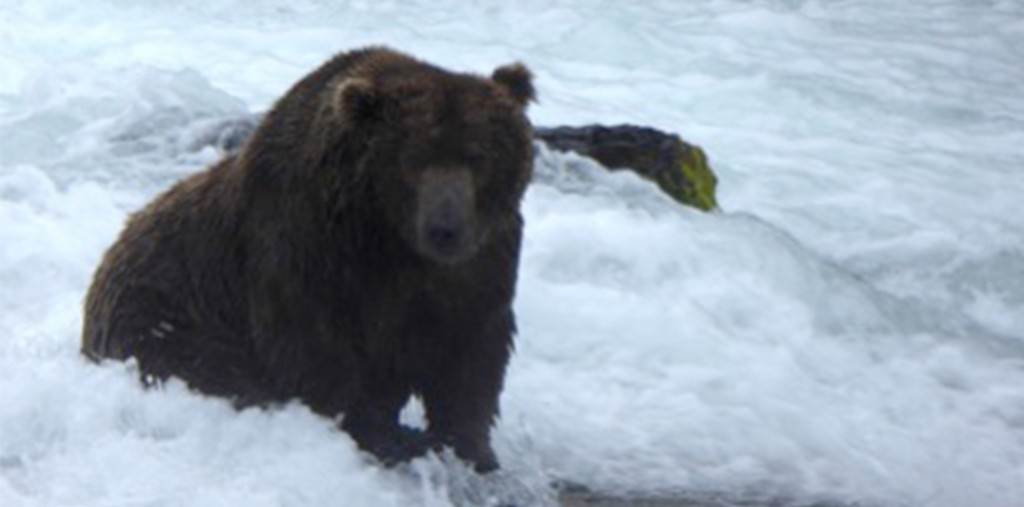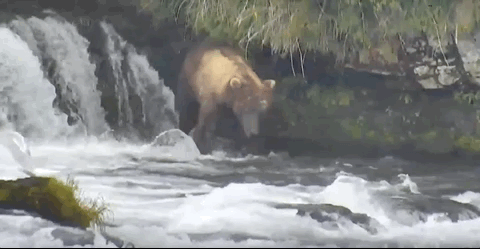By Mike Fitz
From 2011 to 2016, bear 856 was one of the most dominant animals at Brooks River. Through his large size and, especially, his assertive disposition, he could go where he wanted and fish when he wanted to. Last July, however, 856 did not maintain his rank at the top of the bear hierarchy. By the fall of 2017, bears like 32 Chunk and 747 (shown above) routinely displaced 856. Will we see another hierarchy shift on bearcam this summer?
Bears communicate through body language and vocalizations to settle disputes over food or access to food and other resources. Disposition and size, especially, factor heavily in resolving conflict. Bigger more assertive bears are able to establish dominance over other bears, and in this way bears establish a hierarchy.
You can see the hierarchy play out repeatedly at Brooks Falls with more dominant bears gaining greater access to their most preferred fishing spots. As I wrote for the Katmai Terrane blog a few years ago, the traits of a dominant bear include:
- Size: Dominant bears are typically the largest bears.
- Male: The most dominant bears are adult males, most likely because males are 1/2 to 1/3 larger than females.
- Assertive: Dominant bears have an assertive disposition, move in an apparently confident manner through the river, and often ignore competing bears.
- Body and Ear Positioning: Dominant bears approach other bears with their head up and ears forward.
Subordinate bears are quick to avoid more dominant competitors, as 603 demonstrated when he saw 32 Chunk approach him last summer.
The hierarchy is a fluid feature of the bears’ world. Competition for fishing spots and, if you’re a male bear, potential mates at Brook Falls creates conflict but knowing where you rank in the hierarchy and, importantly, where other bears rank can help you avoid physical fights more often than not. For many years, 856 utilized his size and disposition to his advantage. He was able to go where he pleased and fish where he wanted because he realized few bears would challenge him. However, potential challengers, eager to take his place if he showed any weakness, were always lying in wait.
This summer, the bear hierarchy at Brooks River may shift again. Bears like 32 Chunk and 747, are just as big, if not bigger, than 856. Younger adult bears like 89 Backpack, 274, and 151 Walker will also try to gain access to their most preferred fishing spots. Even the river’s oldest adult male, 480 Otis, isn’t easily displaced by anyone but the river’s largest bears. Watching the ebb and flow of the hierarchy allows us to at least partly understand the conflict and challenges faced by bears.




